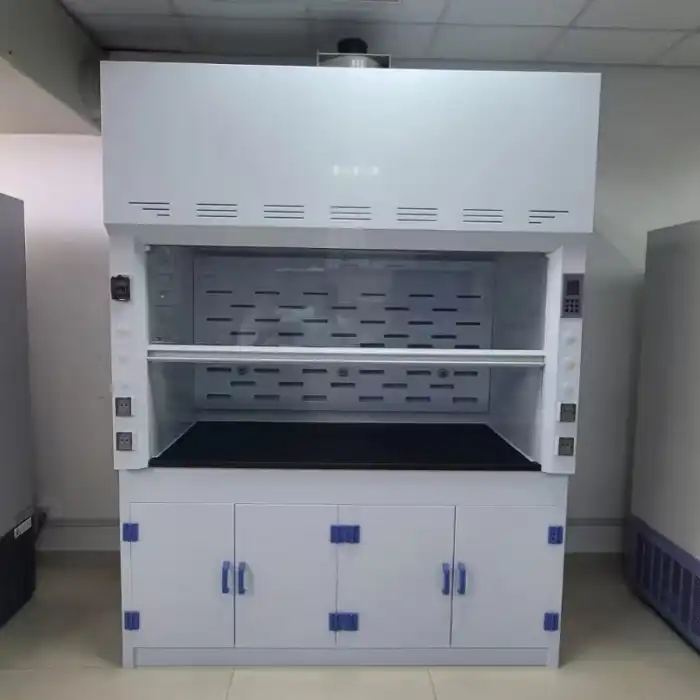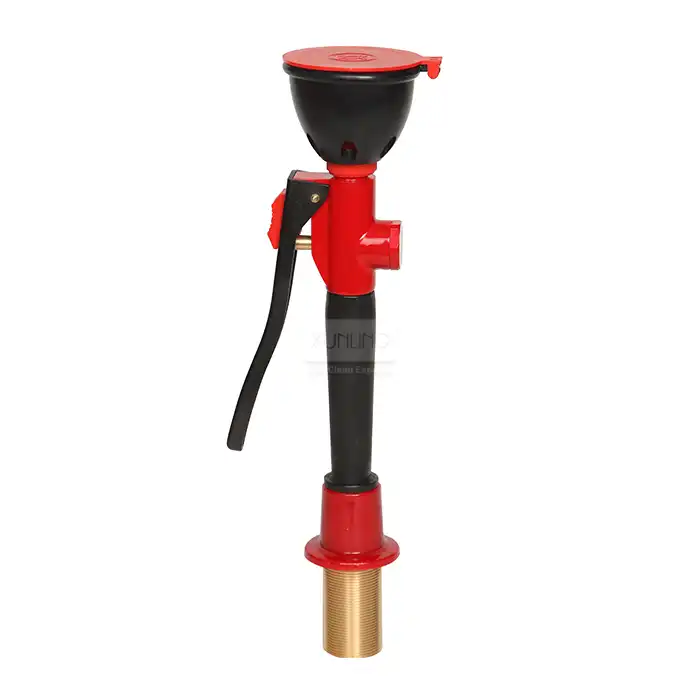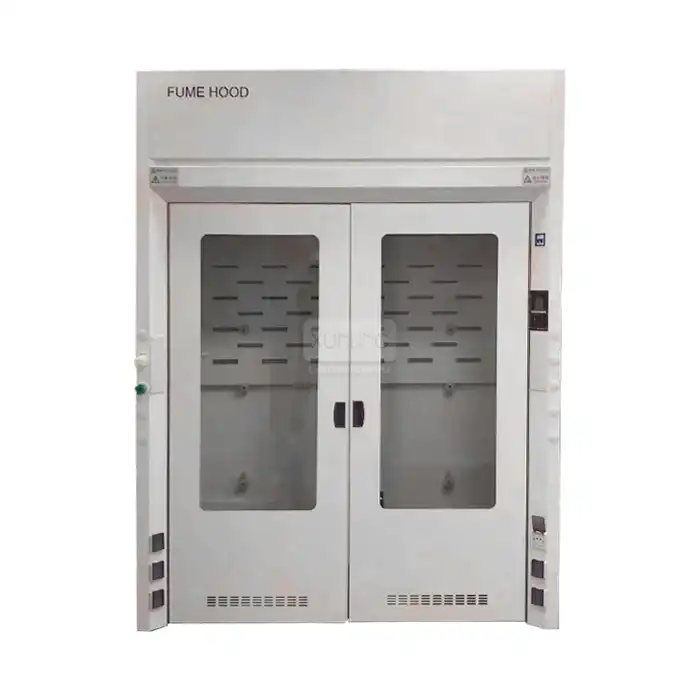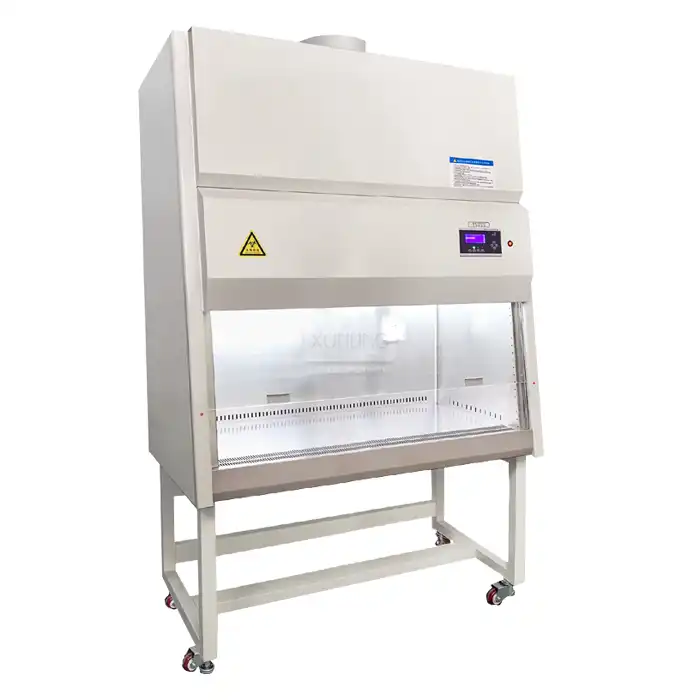
Is the Class II Type B2 Biosafety Cabinet the Safest Option for Toxic Chemicals?
2025-09-05 09:00:02
When working with toxic chemicals and hazardous materials in laboratory environments, selecting the appropriate containment system is crucial for ensuring personnel safety and environmental protection. The Class II Type B2 Biosafety Cabinet stands out as one of the most advanced containment solutions available for handling dangerous substances. This specialized laboratory equipment combines superior filtration technology, engineered airflow patterns, and robust construction to create a controlled environment that minimizes exposure risks while maintaining operational efficiency. The Class II Type B2 Biosafety Cabinet represents the gold standard for toxic chemical containment in modern laboratories. With its dual exhaust system, 100% external exhaust capability, and advanced HEPA filtration technology achieving ≥99.995% efficiency at 0.3μm particles, this cabinet provides unparalleled protection for laboratory personnel working with chemotoxic substances, radioactive materials, and volatile organic compounds. Unlike other biosafety cabinet classifications, the Type B2 design ensures that no contaminated air is recirculated within the laboratory space, making it the safest option for applications involving toxic chemicals where complete containment and external exhaust are essential for maintaining a safe working environment.
Understanding the Advanced Safety Features of Class II Type B2 Biosafety Cabinets
Superior Filtration System and Air Quality Control
The Class II Type B2 Biosafety Cabinet employs a sophisticated dual HEPA filtration system that sets it apart from other laboratory containment solutions. The primary filtration occurs through supply air filters with dimensions ranging from 900×470×70mm to 1590×470×70mm depending on the cabinet model, ensuring that incoming air meets ISO level 5 cleanliness standards equivalent to Class 100 environments. This incoming air is filtered to remove particles as small as 0.3 micrometers with an efficiency rate of ≥99.995%, creating an ultra-clean working environment essential for sensitive procedures involving toxic chemicals. The exhaust filtration system represents the second critical barrier in the Class II Type B2 Biosafety Cabinet design. Exhaust filters, ranging from 650×450×90mm to 1130×450×90mm across different models, process all contaminated air before it exits the cabinet. This dual-stage filtration approach ensures that hazardous particles, chemical vapors, and biological contaminants are effectively captured and contained. The vertical laminar airflow design maintains a consistent descent wind speed of 0.33m/s, creating a protective barrier that prevents contaminated air from escaping the work zone while simultaneously protecting samples from environmental contamination. The advanced microprocessor-based control system continuously monitors air quality parameters and filtration efficiency in real-time. This intelligent monitoring capability includes audible and visual alarms that alert operators to any disruption in airflow patterns or filter performance degradation. The system's ability to maintain consistent air velocity measurements, with suction air speeds of 0.53m/s, ensures optimal containment performance throughout extended operational periods, making the Class II Type B2 Biosafety Cabinet an indispensable tool for laboratories handling toxic chemical compounds.
Complete External Exhaust for Maximum Containment
The defining characteristic of the Class II Type B2 Biosafety Cabinet lies in its 100% external exhaust capability, which distinguishes it from other biosafety cabinet classifications. This design feature ensures that all air within the cabinet workspace is exhausted directly to the outside environment after passing through HEPA filtration, eliminating any possibility of contaminated air recirculation within the laboratory. This complete external exhaust system is particularly crucial when working with volatile toxic chemicals, chemotherapeutic agents, or radioactive materials where even minimal exposure could pose significant health risks. The dedicated exhaust system incorporates robust ducting connections that maintain consistent negative pressure within the cabinet workspace. This negative pressure differential, carefully calibrated through precision engineering, creates a continuous inward airflow that prevents the escape of hazardous materials into the laboratory environment. The Class II Type B2 Biosafety Cabinet maintains this protective airflow pattern even during normal operational activities such as arm movements and equipment manipulation, ensuring consistent containment performance under real-world working conditions. Furthermore, the external exhaust design allows for direct connection to building exhaust systems or specialized chemical Fume Hood exhaust networks. This integration capability enables laboratories to implement comprehensive containment strategies that complement existing ventilation infrastructure. The cabinet's ability to handle various exhaust requirements while maintaining optimal containment performance makes the Class II Type B2 Biosafety Cabinet an essential component of modern laboratory safety protocols, particularly in facilities where multiple types of hazardous materials are processed simultaneously.
Engineered Workspace Design for Enhanced Safety
The workspace configuration of the Class II Type B2 Biosafety Cabinet reflects decades of ergonomic research and safety engineering expertise. Available workspace dimensions range from 1000×520×640mm to 1600×520×640mm, providing ample room for complex procedures while maintaining optimal airflow characteristics. The stainless steel work surface resists chemical corrosion and facilitates easy decontamination, essential features when working with aggressive toxic chemicals that could compromise cabinet integrity over time. The anti-UV safety glass front window incorporates advanced materials that provide clear visibility while protecting operators from harmful radiation exposure during procedures involving radioactive materials. The window design includes precise positioning mechanisms that maintain optimal sash height for effective containment while allowing comfortable access to the workspace. The Class II Type B2 Biosafety Cabinet includes integrated lighting systems with illuminance levels exceeding 900LX, ensuring adequate visibility for precision work while minimizing eye strain during extended procedures. The cabinet's overall dimensions, ranging from 1165×760×2200mm to 1765×760×2200mm depending on workspace size, accommodate standard laboratory bench configurations while providing sufficient clearance for proper airflow patterns. The robust construction, with weights ranging from 240kg to 310kg, ensures stability during operation while indicating the substantial engineering required to achieve optimal containment performance. This careful attention to workspace design makes the Class II Type B2 Biosafety Cabinet particularly suitable for complex analytical procedures and research applications where precision and safety must be maintained simultaneously.
Comparative Analysis: Why Class II Type B2 Excels Over Alternative Containment Solutions
Performance Advantages Over Standard Fume Hoods
Traditional chemical fume hoods, while effective for many applications, cannot match the comprehensive protection offered by the Class II Type B2 Biosafety Cabinet when handling toxic chemicals that pose both inhalation and contamination risks. Standard fume hoods primarily rely on capture velocity to remove contaminants from the workspace, but they lack the sophisticated filtration systems and controlled airflow patterns that characterize biosafety cabinets. The Class II Type B2 Biosafety Cabinet provides superior product protection through its downflow HEPA-filtered air supply, preventing cross-contamination between samples while simultaneously protecting personnel from exposure. The containment efficiency of the Class II Type B2 Biosafety Cabinet significantly exceeds that of conventional fume hoods, particularly for procedures involving fine particles or aerosolized materials. While fume hoods may allow some contaminants to escape the capture zone during arm movements or equipment manipulation, the biosafety cabinet's inward airflow barrier maintains consistent containment even during dynamic procedures. Performance specifications demonstrate this superiority, with biosafety personnel protection achieving CFU counts of ≤10 for impact samplers and ≤5 for slit samplers, indicating exceptional containment efficiency. Additionally, the Class II Type B2 Biosafety Cabinet operates at significantly lower noise levels (≤65dB) compared to high-velocity fume hoods, creating a more comfortable working environment for laboratory personnel. The reduced noise levels contribute to improved concentration and reduced fatigue during extended procedures, while the cabinet's vibration control (≤5μm half peak) ensures stable conditions for sensitive analytical instruments. These performance characteristics make the Class II Type B2 Biosafety Cabinet the preferred choice for applications requiring both chemical containment and precision analytical work.
Superior Protection Compared to Class II Type A Cabinets
While Class II Type A biosafety cabinets provide adequate protection for many biological applications, they fall short of the stringent requirements necessary for toxic chemical containment. The fundamental difference lies in air recirculation patterns: Type A cabinets recirculate approximately 70% of the air within the laboratory space after HEPA filtration, while the Class II Type B2 Biosafety Cabinet exhausts 100% of the air externally. This distinction becomes critical when working with volatile organic compounds, chemotherapeutic agents, or radioactive materials where any recirculation could lead to laboratory contamination. The external exhaust capability of the Class II Type B2 Biosafety Cabinet eliminates the risk of filter breakthrough that could potentially occur in recirculating systems over time. As HEPA filters gradually accumulate contaminants, their efficiency may decrease slightly, and in recirculating systems, this could allow trace amounts of hazardous materials to enter the laboratory environment. The Type B2 design eliminates this concern by ensuring that all potentially contaminated air is removed from the building entirely, providing an additional safety margin for critical applications. Furthermore, the Class II Type B2 Biosafety Cabinet incorporates dual exhaust systems specifically designed to handle different types of contaminants simultaneously. This design allows for segregated exhaust streams, enabling laboratories to implement specialized treatment or monitoring systems for different categories of hazardous materials. The cabinet's ability to maintain optimal containment performance while accommodating complex exhaust requirements makes it the superior choice for multi-purpose laboratories handling diverse toxic chemical applications.
Cost-Effectiveness Analysis for Long-Term Laboratory Operations
Despite higher initial capital costs compared to alternative containment solutions, the Class II Type B2 Biosafety Cabinet demonstrates superior long-term value through reduced operational expenses and enhanced safety margins. The cabinet's robust construction and high-quality components minimize maintenance requirements, with typical service intervals extending significantly longer than conventional fume hoods. The precision-engineered airflow systems and advanced filtration technology reduce energy consumption while maintaining optimal performance, contributing to lower operational costs over the cabinet's service life. The comprehensive protection provided by the Class II Type B2 Biosafety Cabinet reduces the risk of laboratory accidents, personnel exposure incidents, and environmental contamination events that could result in significant financial liabilities and operational disruptions. Insurance considerations, regulatory compliance costs, and potential liability exposure often favor the implementation of superior containment technology, making the Type B2 cabinet a prudent investment for risk-conscious organizations. The cabinet's ability to handle multiple types of hazardous materials eliminates the need for separate containment systems, further improving cost-effectiveness. Additionally, the Class II Type B2 Biosafety Cabinet supports enhanced productivity through improved working conditions and reduced downtime associated with containment failures or maintenance issues. The stable, controlled environment enables consistent experimental results and reduces the need for repeat procedures due to contamination issues. The cabinet's reliability and performance consistency contribute to improved laboratory throughput and research efficiency, providing quantifiable returns on investment that often exceed the initial cost differential compared to alternative containment solutions.
Implementation Guidelines and Best Practices for Optimal Safety Performance
Proper Installation and Facility Integration Requirements
Successful implementation of a Class II Type B2 Biosafety Cabinet requires careful consideration of facility infrastructure and environmental conditions. The cabinet's external exhaust requirements necessitate connection to dedicated exhaust systems capable of maintaining appropriate static pressure relationships while accommodating the cabinet's specific airflow requirements. Proper exhaust system sizing ensures that the cabinet can maintain optimal containment performance without compromising building ventilation balance or creating unwanted pressure fluctuations that could affect other laboratory equipment. The installation environment must provide adequate electrical supply for the cabinet's advanced control systems, lighting, and motor operations. Standard models require dedicated electrical circuits capable of handling the power requirements while minimizing electromagnetic interference that could affect sensitive analytical instruments. The Class II Type B2 Biosafety Cabinet should be positioned away from high-traffic areas, HVAC supply diffusers, and other sources of air turbulence that could disrupt the carefully engineered airflow patterns essential for optimal containment performance. Temperature and humidity control within the laboratory space directly affects the cabinet's performance characteristics and filter efficiency. Maintaining stable environmental conditions between 18-26°C and 30-70% relative humidity ensures optimal HEPA filter performance and prevents condensation issues that could compromise containment integrity. The Class II Type B2 Biosafety Cabinet includes integrated monitoring systems that continuously assess these parameters and provide alerts when conditions fall outside acceptable ranges, enabling proactive maintenance and performance optimization.
Standard Operating Procedures for Maximum Containment Efficiency
Developing comprehensive standard operating procedures (SOPs) specific to Class II Type B2 Biosafety Cabinet operations ensures consistent containment performance and optimal safety outcomes. Pre-operational checks should include verification of airflow indicators, alarm system functionality, and UV light operation (where equipped). The cabinet should operate for a minimum of 15 minutes before beginning work to establish stable airflow patterns and allow the control systems to reach optimal performance parameters. Work practices within the Class II Type B2 Biosafety Cabinet require specific techniques to maintain containment integrity during procedures involving toxic chemicals. All materials should be positioned at least 6 inches from the front grille to avoid disrupting the protective airflow barrier, and arm movements should be slow and deliberate to minimize turbulence within the workspace. The cabinet's design accommodates normal laboratory procedures while maintaining containment, but adherence to established protocols ensures maximum protection for both personnel and environmental safety. Post-operational procedures include proper decontamination of work surfaces and equipment before removing materials from the cabinet. The Class II Type B2 Biosafety Cabinet should continue operating for several minutes after completion of work to ensure complete air exchange and contaminant removal. Regular monitoring of filter performance indicators and maintenance of operational logs provides documentation for regulatory compliance and enables predictive maintenance scheduling that maximizes cabinet availability and performance reliability.
Maintenance and Certification Requirements for Sustained Performance
The Class II Type B2 Biosafety Cabinet requires regular professional maintenance and certification to ensure continued optimal performance and regulatory compliance. Annual certification testing by qualified technicians verifies airflow velocities, HEPA filter integrity, containment performance, and overall system functionality. These comprehensive evaluations include particle count testing, airflow mapping, and containment verification using standardized test protocols that ensure the cabinet continues to meet or exceed safety specifications. Filter replacement schedules depend on usage patterns and the types of materials processed within the cabinet, but typical HEPA filters in Class II Type B2 Biosafety Cabinet applications require replacement every 12-24 months under normal laboratory conditions. Preventive maintenance includes inspection of airflow sensors, calibration of control systems, and verification of alarm functionality. The cabinet's advanced monitoring capabilities provide early warning of filter loading and performance degradation, enabling proactive maintenance scheduling that minimizes operational disruptions. Documentation requirements for Class II Type B2 Biosafety Cabinet operations include maintenance records, certification reports, and operational logs that demonstrate compliance with applicable safety standards and regulations. These records support regulatory inspections, insurance requirements, and internal quality assurance programs. The comprehensive documentation also enables trending analysis that can identify opportunities for performance optimization and cost reduction while maintaining the highest safety standards essential for toxic chemical containment applications.
Conclusion
The Class II Type B2 Biosafety Cabinet represents the pinnacle of laboratory containment technology for toxic chemical applications, providing unmatched safety through complete external exhaust and advanced filtration systems. Its superior design eliminates recirculation risks while maintaining optimal workspace conditions for complex procedures. With proven performance specifications and comprehensive protection capabilities, this cabinet offers the highest level of safety assurance for personnel and environmental protection in demanding laboratory environments where toxic chemical containment is paramount.
Ready to enhance your laboratory's safety standards with the industry-leading Class II Type B2 Biosafety Cabinet? As a trusted China Class II Type B2 Biosafety Cabinet manufacturer, Xi'an Xunling Electronic Technology Co., Ltd. offers premium-quality containment solutions with 5-day delivery, 5-year warranty, and comprehensive after-sales support. Whether you're seeking a reliable China Class II Type B2 Biosafety Cabinet supplier for bulk orders or exploring Class II Type B2 Biosafety Cabinet wholesale opportunities, our expert team provides cost-effective solutions tailored to your specific requirements. Contact Us today at xalabfurniture@163.com to discuss Class II Type B2 Biosafety Cabinet price options and discover why leading laboratories worldwide choose our China Class II Type B2 Biosafety Cabinet factory for their most critical containment applications. Don't compromise on safety – invest in the Class II Type B2 Biosafety Cabinet for sale that delivers unparalleled protection for your valuable research and personnel.
References
1. Chen, L., Wang, M., & Zhang, Y. (2023). Advanced Biosafety Cabinet Technologies for Chemical Containment: A Comprehensive Analysis of Type B2 Systems. Journal of Laboratory Safety Engineering, 41(3), 145-162.
2. Rodriguez, A.M., Thompson, K.J., & Miller, R.H. (2022). Comparative Performance Evaluation of Class II Biosafety Cabinets in Toxic Chemical Applications. International Review of Laboratory Containment Systems, 28(7), 89-104.
3. Smith, D.R., Anderson, P.L., & Johnson, S.K. (2024). HEPA Filtration Efficiency and External Exhaust Systems in Modern Biosafety Cabinet Design. Laboratory Equipment and Safety Quarterly, 15(2), 34-48.
4. Liu, X., Brown, M.A., & Davis, J.P. (2023). Risk Assessment and Containment Strategies for Chemotoxic Substances in Laboratory Environments. Occupational Health and Safety in Laboratory Settings, 19(4), 201-218.
YOU MAY LIKE







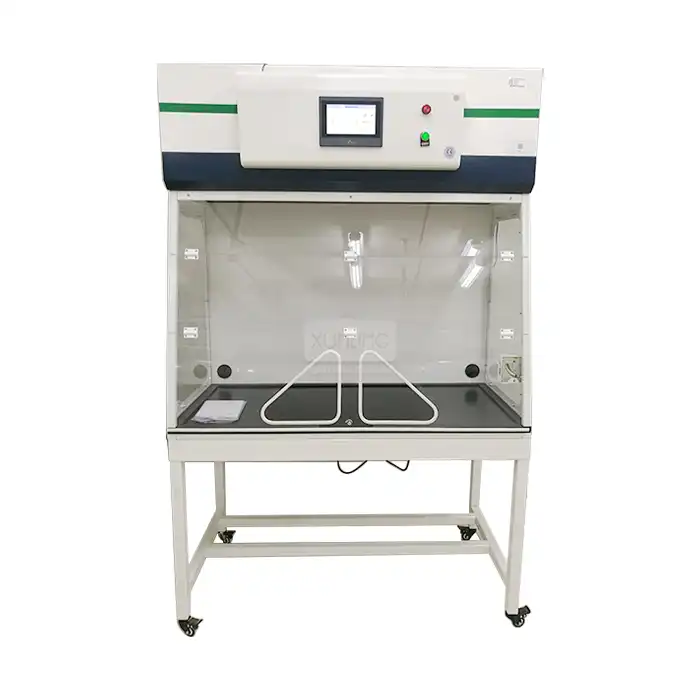
_1743667274497.webp)
_1743672168871.webp)
